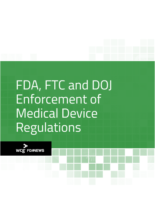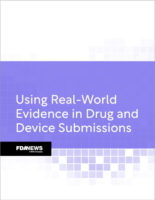
Home » FDA Adds Device Scenarios to Final GMP Guidance for Combo Products
FDA Adds Device Scenarios to Final GMP Guidance for Combo Products
January 27, 2017
The FDA finalized guidance on GMP requirements for combination product manufacturers, adding scenarios to clarify how to comply with certain device requirements.
The 59-page guidance — which covers GMP requirements for drug-drug, drug-device, drug-biologic and biologic-device combination products — is largely identical to the 2015 draft guidance, except for the addition of compliance examples for prefilled syringes, drug-coated mesh and drug-eluting stents.
When a manufacturer intends to apply for marketing approval for a prefilled syringe of a previously approved drug product, the manufacturer must demonstrate compliance with both the drug GMPs and device quality system regulations, the guidance said.
The manufacturer must ensure that its system fully complies with the drug GMPs for this product, taking into account all of the issues raised by inclusion of the device constituent part — including management responsibility, design controls, verification and changes, as well as risk analysis.
Meanwhile, the guidance’s drug-eluting stent scenario considers four separate manufacturers: the owner of the stent; the maker of the active pharmaceutical ingredient; the manufacturer of the polymer used to bind the bulk drug substance coating to the stent; and the company producing the primary packaging.
Because the owner of the stent is purchasing the other three, it is up to the owner to make sure the other products approved for use.
The final version reiterates that combination product makers have two options for compliance: satisfy all drug and device GMPs, or implement a streamlined quality system that focuses primarily on one but incorporates elements of the other. Like the draft, the final guidance details which GMPs are applicable to a product, general methods for how to implement them, key definitions, and how to make postmarket changes to a product’s quality system. These recommendations have not changed.
In comments on the January 2015 draft guidance, Advamed said it was encouraged that FDA devised a streamlined program intended to assist manufacturers in complying with 21 C.F.R. Part 4. However, it asked for additional clarification on how best manufacturers can comply with this regulation.
The FDA advised manufacturers to contact the lead center for their product, either CDRH, CDER, CBER or the agency’s Office of Combination Products, if they have questions on GMP compliance.
The FDA says combination product manufacturers have two options for GMP compliance: satisfy all device and drug GMPs, or implement a streamlined quality system that focuses primarily on one but incorporates elements of the other. This report will guide manufacturers in developing a strategy that makes not only good compliance sense but also good business sense. The Combination Products cGMP Compliance report from FDAnews will teach you all you need to know to successfully manufacture your product.
Upcoming Events
-
21Oct

